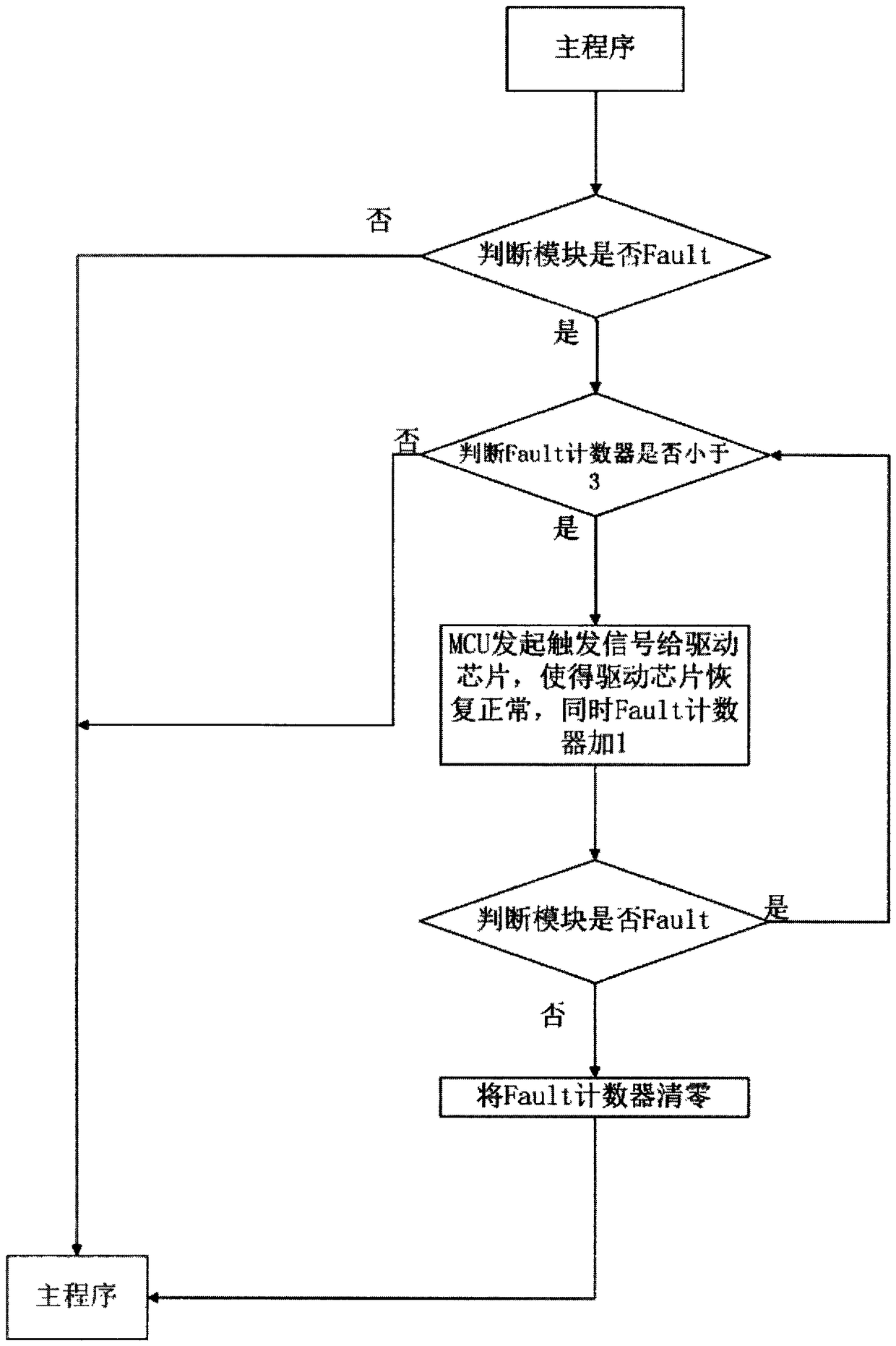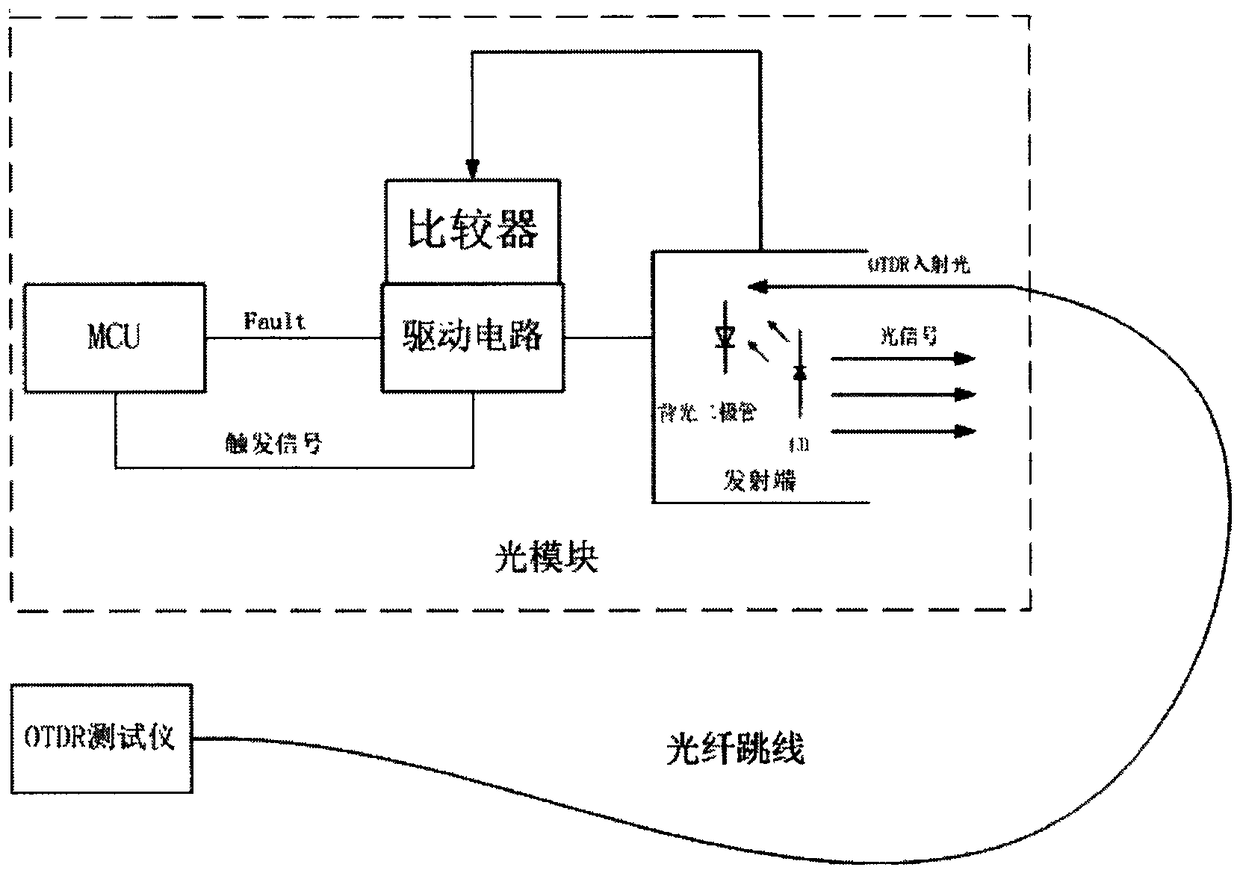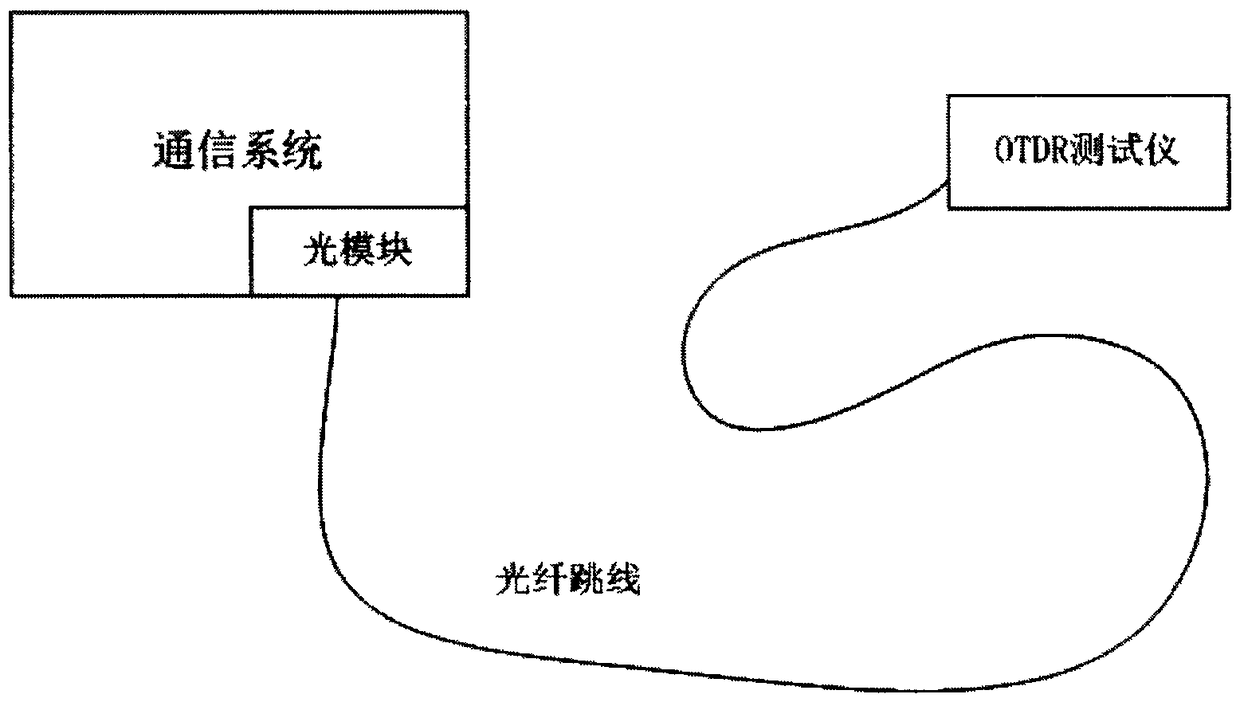Self-recovery method for test failure of optical module at otdr transmitter
An optical module testing and self-recovery technology, applied in the field of optical communication networks, can solve problems such as transmitter failure and excessive received light, and achieve the effect of reducing later maintenance costs and handling accidental failures easily.
- Summary
- Abstract
- Description
- Claims
- Application Information
AI Technical Summary
Problems solved by technology
Method used
Image
Examples
Embodiment Construction
[0015] refer to figure 1 . In the embodiment described below, the specific steps of the self-recovery of the OTDR transmitter optical module test failure: the micro-control unit MCU that contains the self-recovery program software is set in the optical module, and the micro-control unit MCU is connected to the Fault pin of the driver chip. The signal is polled. If the MCU reads that the state of the Fault pin connected to the driver chip is low, it means that the optical module is working normally. The MCU does not do any processing and continues the main program; if the Fault pin is detected If the status is high, it means that the optical module fails to work. The next step self-recovery program detection judges whether the Fault counter is less than 3, if the Fault counter is greater than or equal to 3, then return to the main program and continue to execute other instructions; if the Fault counter is less than 3, the micro control unit MCU generates a The high-level tri...
PUM
 Login to View More
Login to View More Abstract
Description
Claims
Application Information
 Login to View More
Login to View More - R&D
- Intellectual Property
- Life Sciences
- Materials
- Tech Scout
- Unparalleled Data Quality
- Higher Quality Content
- 60% Fewer Hallucinations
Browse by: Latest US Patents, China's latest patents, Technical Efficacy Thesaurus, Application Domain, Technology Topic, Popular Technical Reports.
© 2025 PatSnap. All rights reserved.Legal|Privacy policy|Modern Slavery Act Transparency Statement|Sitemap|About US| Contact US: help@patsnap.com



